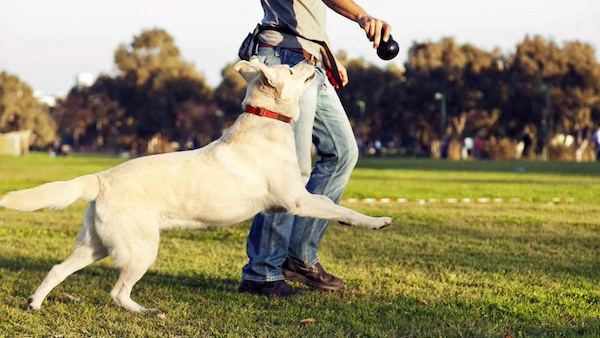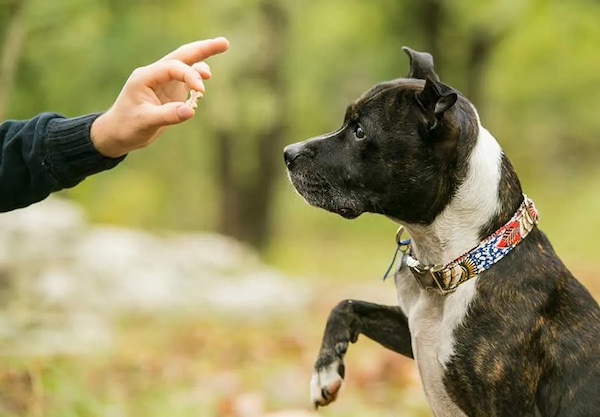Dog training is essential for building a strong, positive relationship with your furry companion. However, misinformation and outdated techniques have led to persistent myths about the best ways to train dogs. Some of these misconceptions can slow progress, create unnecessary frustration, or even cause harm. In this article, we’ll debunk some of the most common dog training myths and replace them with science-backed facts that will help you train your dog effectively and humanely.
Myth 1: You Can’t Teach an Old Dog New Tricks
Many people believe that once a dog reaches adulthood, they’re set in their ways and can’t learn new behaviors. This myth couldn’t be further from the truth. While puppies may be more adaptable, dogs of all ages have the capacity to learn new skills.
Older dogs may take longer to pick up new behaviors, but with patience and consistency, they can successfully learn commands, tricks, and even overcome bad habits. Training older dogs can also provide mental stimulation, keeping their minds sharp and engaged. If an adult dog has a history of reinforced negative behaviors, those habits might take longer to change, but with positive reinforcement and persistence, it’s entirely possible.
Myth 2: Dogs Should Be Dominated to Show Who’s Boss
The dominance theory in dog training has been around for decades, largely influenced by outdated studies on wolf packs. The idea that owners must establish themselves as the “alpha” by using forceful tactics such as alpha rolls, physical corrections, or intimidation has been debunked by modern animal behavior research.
Dogs do not operate in hierarchical packs where they constantly try to challenge their owner’s authority. Instead, they respond best to clear communication, structure, and positive reinforcement. Training methods based on trust and mutual respect lead to better results and a stronger human-dog bond. Harsh punishment and dominance-based methods often create fear and confusion, leading to more behavioral issues rather than solving them.
Myth 3: Using Treats in Training is Just Bribery
Some dog owners worry that relying on treats during training will turn their dog into a treat-dependent learner who only obeys when food is involved. The truth is that treats are one of the most effective tools for reinforcing good behavior, especially in the early stages of training.
Positive reinforcement, which includes treats, praise, and play, is backed by behavioral science as the best way to train dogs. When used correctly, treats serve as an incentive to reinforce desired actions. As training progresses, treats can be gradually phased out and replaced with other rewards like verbal praise, petting, or playtime.
Rather than thinking of treats as bribery, view them as a paycheck—just as humans work for rewards, dogs do too. Once they learn a behavior reliably, treats can become occasional bonuses rather than constant motivators.
Myth 4: A Dog Will “Just Grow Out” of Bad Behavior

Many dog owners assume that their dog will naturally stop problematic behaviors, such as excessive barking, jumping, or chewing, as they mature. However, most behavioral issues don’t disappear on their own—they often become more ingrained if left unaddressed.
Puppies, in particular, go through developmental stages where behaviors like nipping or chewing are common, but if not managed properly, these habits can persist into adulthood. Training, socialization, and redirection are crucial in shaping desirable behaviors early on. If an adult dog develops bad habits, proactive training is necessary to correct them.
Waiting for a dog to “grow out of it” often results in frustration and a harder-to-break cycle of bad behavior. It’s always better to address unwanted behaviors early rather than allowing them to become established.
Myth 5: Punishment is the Best Way to Stop Bad Behavior
It’s a common belief that scolding, yelling, or using physical punishment will effectively stop a dog from misbehaving. However, punishment-based training methods can do more harm than good.
Dogs don’t always understand punishment in the way humans intend. For example, if a dog chews on furniture and is scolded after the fact, they may not associate the punishment with the act of chewing—they may instead become fearful of their owner. Harsh corrections can also lead to stress, anxiety, and even aggression.
A more effective approach is to redirect unwanted behaviors and reinforce positive ones. If a dog chews on something inappropriate, offering a chew toy and rewarding them for using it helps teach them what they should do instead. Reward-based training builds trust and encourages dogs to make better choices on their own.
Myth 6: Some Breeds Are Impossible to Train
Certain breeds have reputations for being stubborn or difficult to train, leading some people to believe that training is impossible for them. While some breeds may be more independent or energetic than others, no breed is truly “untrainable.”
Every dog, regardless of breed, is capable of learning with the right approach. Some dogs require more patience, motivation, or specialized training techniques, but all breeds can be trained effectively when their natural tendencies are taken into account. For example, high-energy breeds like Border Collies may require more mental stimulation and structured training, while independent breeds like Huskies may need extra motivation and consistency.
Understanding breed characteristics can help tailor training methods to better suit a dog’s learning style, making training more effective and enjoyable.
Myth 7: A Dog That Wags Its Tail is Always Happy
Tail wagging is often seen as a universal sign of happiness, but in reality, it can indicate a range of emotions, including excitement, fear, or even aggression. The way a dog wags its tail—its speed, height, and movement—matters when interpreting their emotional state.
A relaxed, loose wag typically signals friendliness, while a stiff, high-held wag may indicate tension or excitement . A low, slow wag might mean uncertainty or insecurity. To fully understand a dog’s mood, it’s important to consider other body language cues, such as ear position, facial expressions, and overall posture.
Recognizing these subtle differences can prevent misunderstandings and ensure safer interactions with dogs.
Conclusion
Dog training myths can lead to ineffective or even harmful approaches, but by relying on science-backed techniques, dog owners can create a more successful and positive training experience. Whether it’s understanding that old dogs can learn new tricks, recognizing the benefits of positive reinforcement, or debunking dominance-based training, the key to effective dog training is patience, consistency, and clear communication.
By avoiding these common misconceptions and using evidence-based training methods, you’ll build a stronger bond with your dog and set them up for long-term success. Training should be enjoyable for both you and your dog, and when done correctly, it creates a well-behaved and happy canine companion.





